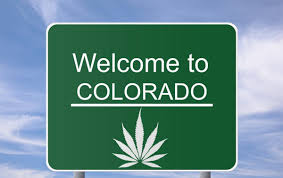Tuesday, December 31, 2013
By John Ingold
Federal marijuana prohibition in the United States started with a knock on a Denver man’s apartment door.
Seventy-six years ago, a guy named Samuel Caldwell became the first person arrested and prosecuted under a federal charge of selling marijuana, after drug-enforcement agents busted him with 3 pounds of cannabis in his apartment at 17th and Lawrence streets. So historically significant was the moment that the nation’s leading anti-marijuana crusader, Federal Bureau of Narcotics chief Harry Anslinger, came to Denver to watch the trial.
“These men,” Anslinger said of Denver authorities afterward, “have shown the way to other district attorneys throughout the nation.”
Which makes it all the more startling that those men’s successors will be standing aside Wednesday when Colorado puts the biggest ding in marijuana prohibition since its inception.
Three-quarters of a century and an estimated 26 million marijuana arrests after Caldwell’s, legal marijuana sales were set to start at 8 a.m. in Colorado, just blocks from where Caldwell was arrested. To Isaac Campos, a history professor at the University of Cincinnati who studies the drug war, the significance cannot be overstated.
“It’s an enormous change,” he said. “And what we could be witnessing is the first major, major crack in the whole drug war edifice.”
What has changed in the intervening years — what turned Colorado from the forefront of marijuana criminalization to leading the retreat from it — is simple enough to chart, Campos said. Activists buttoned down, donors put in big cash, voters approved medical marijuana laws, and a new industry created the first coherent marijuana constituency to push for change.
What the change in marijuana laws has meant for Colorado — and what it will mean in the future — is far less certain.
All marijuana use, possession and sales remain illegal under federal law, meaning Caldwell’s crime is still just as illegal today as it was in 1937. But it has been legal for people 21 and older in Colorado to use and possess up to an ounce of marijuana for more than a year now, after voters approved a constitutional measure in November 2012.
Reliable numbers for changes in marijuana usage, black-market activity, stoned driving, emergency room visits and youth access to marijuana in 2013 are still a year or two away from being available.
Prosecutions in state courts for all cannabis crimes have plummeted. Tickets for public consumption of marijuana in cities like Denver and Boulder have jumped significantly. Drug-treatment professionals report big increases in caseloads, while a state economic development official said businesses don’t appear to have soured on Colorado because of the new marijuana laws.
What it all means is that, even as Colorado prepares to implement Step 2 of the legalization plan — first-in-the-world regulated retail sales to anyone over 21 with a valid ID — nobody really knows what lies ahead.
“There’s a lot of things that are still in movement,” said Colorado State Patrol Capt. Jeff Goodwin. “I’m not sure we’re even close to scratching the surface of what the impacts will be down the road.”
Caldwell was a 58-year-old widower with at least two stints in prison under his belt when federal agents came looking for him in October 1937. He was accused of selling marijuana to a man named Moses Baca, who then told police he had been high on the pot when he tried to kill his wife. In sentences handed down only two days after the men’s arrests — and only seven days after the federal anti-marijuana law took effect — federal Judge J. Foster Symes gave Caldwell four years in prison.
“I consider marijuana the worst of all narcotics,” Symes said from the bench. “… I have no sympathies with those who sell this weed.”
Even as Symes spoke, federal agents in the city were arresting two more men on marijuana charges.
For decades after, Campos said, marijuana activists had little traction in debating prohibition. Cannabis users were a marginalized group numbering far fewer than the masses who agitated to overturn alcohol prohibition. The 1960s and ’70s placed marijuana within the nation’s counterculture, but Campos said that also spurred a backlash against pot when it became a symbol of the culture war.
But in the early 2000s, activist groups pulled themselves together and found several big-money funders, pushing marijuana into the mainstream in a way that is challenging prohibition across the country.
“Now you have these kind of buttoned-up guys in suits with short hair saying, ‘Look, these policies are irrational,’ ” Campos said.
Enter a guy in a suit with short hair in Colorado in 2005.
Five years before Mason Tvert arrived in Colorado, voters in the state had approved medical marijuana but little had yet come from it. Tvert’s goals, though always incremental, were much bigger: He was gunning for legalization. Starting with a campaign on college campuses comparing the harms of marijuana to alcohol, Tvert branched out to municipal campaigns in Denver and a failed statewide initiative before helping launch the successful legalization campaign in 2012.
His strategy was pretty basic. He wanted to get people to care less about marijuana, not more.
“The overall progression is that people care less and less about this issue,” Tvert said. “There might be more interest in it, but overall there’s less hysteria, and it’s becoming more of a normal, public policy issue. It’s become more boring.”
The effects of Tvert’s success are easily seen in criminal justice numbers.
In Denver, for instance, arrests for marijuana possession in 2013 were about half of what they were in 2012. The number of cases in state court alleging at least one marijuana charge have dropped nearly 80 percent, according to a Post analysis of case data provided by the Colorado Judicial Branch. Prosecutions against people over 21 and under 21 both are down.
But the trend toward lenience with marijuana is perhaps what most alarms cannabis opponents, who say voters in Colorado and the rest of the country aren’t being told the true costs of legalization. Bob Doyle, a member of Smart Approaches to Marijuana, said his organization hopes one day to repeal the legalization laws.
“In the end we’ll win, but we have to have an education process first,” Doyle said.
Drug-treatment professionals say admissions for marijuana addiction have skyrocketed in the past year — though firm numbers aren’t available. They say kids in trouble for marijuana are testing positive for higher potencies.
Doctors at Children’s Hospital Colorado are closely watching whether emergency-room visits by kids who accidentally ingested marijuana will continue to rise.
And in March, Camy Boyle, the associate nurse manager for the burn unit at the University of Colorado Hospital, will give a presentation at a national conference about the sudden spike in injuries related to marijuana hash oil production. Boyle said, after seeing only one injury that could be traced to hash oil in each of 2011 and 2012, the hospital’s burn unit this year saw 10.
“It’s a huge change,” she said.
Samuel Caldwell lived less than a year after finishing his prison sentence for the marijuana charge. His gravestone, on a wind-scraped hill near Erie, is sinking on one side as the ground beneath it collapses. A new, bigger road is being built beside the cemetery. Down the hill, dirt movers clear a parcel for new construction, and, farther beyond, students crowd into a high school that opened the same year Tvert arrived in the state.
All around Samuel Caldwell, a new Colorado is being built. What it will look like will take time to decipher.
“It’s going to be,” Colorado Attorney General John Suthers sighed when asked the question, “at least a couple of years.”
John Ingold: 303-954-1068, jingold@denverpost.com or twitter.com/john_ingold




 Creative Commons Attribution
Creative Commons Attribution